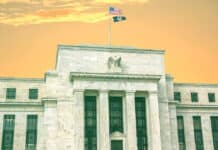
T. Rowe Price has released its outlook for 2026 global investment markets.
Global Asset Allocation: Diversification and Inflation Hedging Remain Key
Thomas Poullaouec, Regional Head of Global Investment Solutions, APAC, said, “With both fiscal and monetary policies being supportive globally, the economic growth backdrop in 2026 may be relatively stable compared to 2025. Risks to the outlook centre around sticky inflation, labour market weakness and the durability of the AI infrastructure spending.”
Poullaouec said, “Our Multi-Asset Investment team holds a balanced view on the markets over the next six to 18 months. We are neutral on asset allocation between equities and fixed income. Within stocks, emerging markets offer the best ratio between future earnings growth and valuations. Within fixed income, credit sectors remain attractive from a duration1 and total yield perspective as long as the economy continues to grow at a robust rate.”
Australia Economy and Fixed Income: RBA Expected to be Hawkish in 2026
Scott Solomon, Co-portfolio manager for T. Rowe Price Dynamic Global Bond Strategy, said, “The Reserve Bank of Australia (RBA) is likely nearing the end of its shallow cutting cycle, sooner than most market participants expected. Sticky inflation has been tough to shake, and the Australian economy appears poised to re-accelerate. Consumer confidence is increasing, and government continues to introduce policies supportive of economic growth. The result is more lending from banks and even more residential construction. While it may not be until 2027, it’s very possible the RBA’s next move is to hike.”
Solomon added that after experiencing several months of strong performance relative to other government bonds, Australian government bonds may underperform the first half of 2026 as the market re-calibrates to a set of scenarios that includes hikes.
Global Fixed Income: Navigating Fiscal Expansion and Debt Sustainability
Ken Orchard, Head of International Fixed Income, said, “Value may become harder to find in highquality government bonds, where significant fiscal expansion and economic growth are pushing supply and yields higher in a competition to attract buyers. Expansionary fiscal policy in the U.S., U.K., Germany, and France is driving governments to issue more debt, raising questions about long-term debt sustainability.”
Also read: Flying Blind: Searching For Signals in a Data-Scarce Economy
Despite narrow credit spreads in 2025, Orchard believes attractive opportunities remain for 2026. “Credit fundamentals are solid, with issuer balance sheets strong and capital markets access robust. We anticipate default rates will stay below long-term averages, but recent ‘late cycle’ behaviours make credit selectivity increasingly important,” he said.
His top fixed income investment strategies include keeping duration low, overweighting credit versus government bonds, underweighting U.S. exposure compared to other regions, seeking out inflation linked bonds, and focusing on emerging markets with a quality bias.
Australian Equities: Market Presents Broader Opportunities
Tom Shelmerdine, Portfolio Manager in the Global Equity Division, said, “2026 is expected to be a better year for the mining and energy facing components of the Australian market after several years of equity underperformance. Metals prices have benefited from debasement and a weaker outlook for the U.S. dollar, with targeted Chinese stimulus and reflationary policies broadening out commodity strength beyond gold. Positive earnings momentum has swung back to the miners in the latter part of 2025 which in combination with a recent spate of weaker results in the banking and industrial sectors’ sets the tone for a turn in equity market leadership toward materials.”
Nicholas Vidale, Equity Investment Analyst, commented, “Continued elevated state and Federal government spending, combined with a decline in interest rates, is likely to drive a cyclical improvement in the domestic economy. Housing construction activity is expected to be a key beneficiary. However, with both immigration and capacity utilisation remaining high in Australia, it might not be too long before rising inflation becomes a problem for the economy again, which could lead to a rise in interest rates, and a premature end to the cyclical uptick in private sector activity. The outlook for bank earnings appears to be improving, but this backdrop could also pose a headwind for valuations because a flattening yield curve can often be associated with declining valuation multiples for banks, and bank valuations are currently at record highs.”
Global Equities: Equity Markets to Broaden
Despite Continued AI Resilience Josh Nelson, Head of Global Equity said, “The AI boom is far from over, but market leadership is beginning to evolve. By 2026, we expect broader participation and a wider range of opportunities—both within AI and across the broader market.”
Nelson explained that attention is shifting from digital AI applications to the physical infrastructure powering the next wave, including energy, cooling, networking, and semiconductors. He also highlighted that the enactment of the “One Big Beautiful Bill” in July 2025 is expected to add approximately US$200 billion to US$300 billion in stimulus planned for 2026. This fiscal thrust, combined with the expected Fed rate cuts, may provide a front-loaded boost to economic activity and corporate earnings.
He also pointed to Europe’s new expansion phase, enabled by Germany’s suspension of its debt brake and increased fiscal flexibility for defence and infrastructure. Japan stands out for attractive valuations, robust cash flow, and improved corporate governance, while China remains a tactical opportunity set as regulatory attitudes have softened, with the government encouraging private enterprise. Ex-China emerging markets also look positive due to favourable valuations.

































